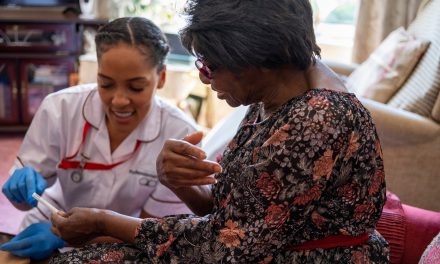Building Communities for Better Health (BCBH), a Lafayette County Health Department (LCHD) program, aims to build healthy, inclusive communities actively working to prevent chronic disease. Lafayette County was one of 18 counties to be selected for the three-year project that focuses on addressing chronic disease. Program funding is provided through the Missouri Department of Health and Senior Services (MDHSS). Additional funding includes mini grants from MDHSS as well as grants supporting the BCBH program’s Master Connectivity Plan, Rail Trail Plan, and Crystal Lake Park Plan. The City of Lexington has also received Missouri Department of Transportation (MO-DOT) funding for planning and a grant from the MFA Oil Foundation to help with trail development.
Instead of a county-wide project, LCHD decided to focus on Lexington because of the city’s high incidence of chronic disease. A coalition of community members, health care professionals, school personnel, community leaders, concerned residents, among others, worked with Community Liaison Marsha Corbin to assess community needs and program goals.
Program Overview
The program’s main impetus is chronic disease prevention. This includes three focus areas: healthy eating, physical activity, and reducing tobacco use. The City of Lexington and the Health Care Collaborative (HCC) of Rural Missouri serve as program partners to help achieve these goals. Lexington, HCC, and LCHD have worked on collaborations like this for the past decade. “It was a natural progression,” said Corbin.
To promote tobacco cessation, the group helped deliver the Tar Wars tobacco prevention program within the Lexington R-V School District. With help from the Lexington Food Pantry, they promoted healthy eating by distributing tools and resources in schools and throughout the community that included things like nutritious snacks, recipes, and lunch containers. Americans with Disabilities Act (ADA) accessibility was also assessed, as well as the availability and affordability of food in high-volume areas to determine need.
In the past, the group developed a Master Connectivity Plan to assess Lexington’s walkability and increase sidewalks to improve safety and encourage physical activity. The walkability study looked at ADA accessibility and noted safety concerns, especially in downtown corridors. As a result, plans are underway to install new sidewalks and open the Rail Trail.
The Rail Trail is a 2.9 mile stretch of abandoned railroad bisecting the community from west to east. By opening a 1.1 mile section of the Rail Trail, BCBH will connect two safe routes to school sidewalks and maintain ADA accessibility from Leslie Bell Elementary School to Lexington Middle School and Lexington High School campuses. Construction on the connecting corridor begins in the next six weeks and should be completed at the end of summer.
Sustainable Success
Throughout the past three years, the project has accomplished many of its goals determined by the initial community needs assessment. To continue the momentum, the three groups are dividing their efforts. HCC will continue its work with tobacco cessation, helping people who want to quit and providing information about the benefits of reducing tobacco use. LCHD will also continue its programs and services promoting tobacco cessation, including its emphasis on youth tobacco cessation and vaping.
LCHD also offers maternal-child health programs to help mothers reduce tobacco use. Services include assisting women and children with nutritional needs, a young moms support group, help with car seats, breastfeeding, and additional support from a maternal-child health coordinator. The main goal of the programs is to help young pregnant women and moms – and their family members – quit smoking, promote a healthier environment, and reduce maternal and infant mortality and low birth rate.
The City of Lexington will take the lead on sidewalk projects to maintain ADA accessibility, safety, and walkability, as well as continue promoting physical activity. “Safe, accessible parks and trails provide an opportunity for physical activity for anyone regardless of economic status or abilities,” Corbin said. “COVID-19 made people more aware of the importance of their health and more receptive to these opportunities throughout the community.” Maintaining accessibility and walkability throughout Lexington trails and sidewalks is a priority as it promotes safe, socially distanced physical activity.
Connect with Your Community
The BCBH program will end in September, unless another opportunity arises, but the work will not end with it. “I really think the program’s biggest success has been the engagement of people in the community,” Corbin said. “The biggest achievement we’ve had is getting people to look at, what do we need to improve in the community and how can we do that.” According to Corbin, the program offered the community a better idea of the LCHD’s role as a public health organization and achieved its goal of connecting the community to existing resources. Though her role as community liaison may end with the program, Corbin plans to stay involved with ongoing projects as a volunteer and potentially in a bigger role if the project is extended.
Coalition members and volunteers on the program’s various projects help connect existing community resources to those hoping to improve their chronic health. Anyone in need of services offered by LCHD, interested in volunteering, or looking to partner on future projects is encouraged to contact the Department directly at 660.259.4371. Follow the Lafayette County Health Department on Facebook for more information about the program and the ongoing Rail Trail project.








